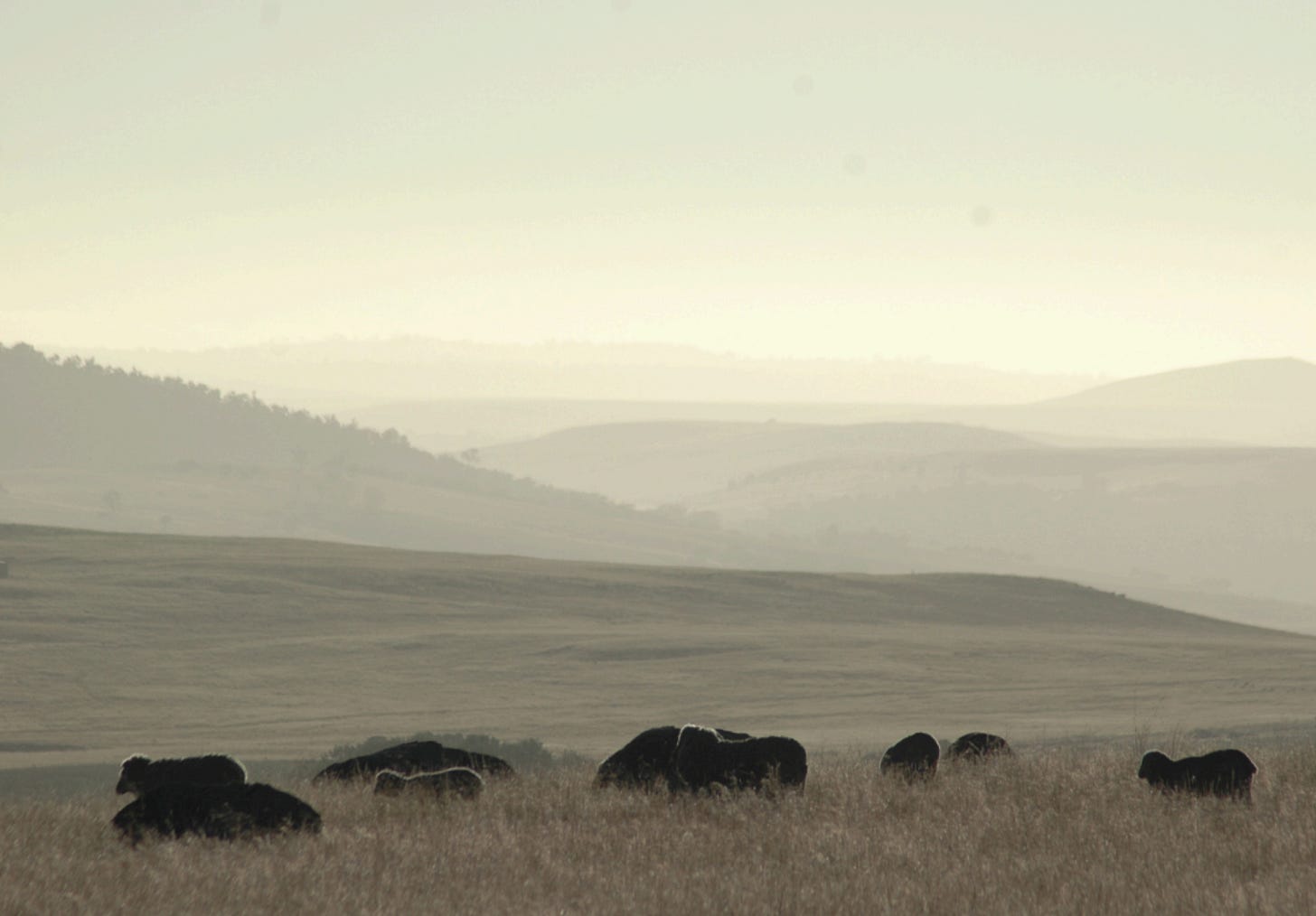Rethinking Wool: Regenerative Agriculture in Action
A glimpse into conversations happening in the Good Wool Collective
Regenerative Farming: A Buzzword or the Real Deal?
Regenerative agriculture has become a focal point in the fashion and textile industry, heralded as a solution to some of the sector's most pressing environmental challenges. But what does it truly entail? Despite its rising prominence, there’s no single agreed-upon definition, fuelling both excitement and scepticism among brands, consumers, and producers.
During our recent Good Wool Collective session, Regenerative Agriculture in Action, we brought together brands and farmers to uncover what genuine regenerative practices look like in action. Our speakers—Philippe Birker, co-founder of Climate Farmers, and Dr. Charles Massy, regenerative farmer, scientist, and author—shared their personal journeys, invaluable insights, and aspirations for building a more harmonious relationship with the land.
The Hidden Costs of Industrial Farming
Philippe Birker began with a stark reality check: industrial farming systems aren’t just failing farmers—they’re failing us all. Exceeding planetary boundaries, contributing to biodiversity loss, and costing an estimated $15 trillion annually in hidden health and environmental damages, the current system is unsustainable.
But there’s hope. Philippe emphasised the wisdom of indigenous farming practices and the potential of regenerative agriculture to sequester carbon, restore ecosystems, and rebuild resilience in farming communities. Through his work with Climate Farmers, he’s seen firsthand how practices like integrating diverse animal species, agroforestry, and holistic grazing plans can breathe new life into the land. For instance, a Southern Portuguese farmer working with Climate Farmers now boasts green grass in June—unheard of for his region—thanks to strategic rotational grazing.
From Degradation to Restoration
Dr. Charles Massy took us to his farm, Severn Park, in Southwest Australia. For decades, he farmed conventionally, following advice that led to overgrazing, soil degradation, and biodiversity loss. Charles began farming regeneratively in the 1990s after witnessing the desertification and dehydration of his land firsthand. These experiences drove him to question conventional methods and adopt practices focused on restoring the land.
“The cowman who clears his range of wolves has not learned to think like a mountain. Hence we have dust bowls and rivers washing the future into the sea.”
— Aldo Leopold
Charles’ journey is a testament to the resilience of nature. As one soil hydrologist working with his farm said, “If you just take your foot off the throat of Mother Nature, she is so resilient and beauty just comes out beneath your boots.”
Regeneration Meets Innovation
Regenerative farming isn’t just about healing the land; it’s also about creating exceptional products. Charles shared how his work with scientists to develop superior Merino sheep has led to wool with unmatched softness and strength. These elite fibres, combined with regenerative grazing practices, offer a unique opportunity for the textile industry: premium wool that supports animal welfare and restores ecosystems.
How Can Brands Support Regenerative Agriculture?
In the Good Wool Collective, we’re actively working to make regenerative agriculture more accessible and meaningful for brands. Our initiatives include:
Encouraging collaborative purchasing to share costs and resources across brands.
Conducting research into innovations like carbon-neutral wool and the latest certifications, helping brands make informed decisions.
Offering guidance on working directly with farmers to build trust and transparency in the supply chain.
Educating brands on how to embrace regenerative practices without falling into greenwashing traps.
Lisa Bergstrand, founder of the Good Wool Collective, concluded the session by saying: “This is a great opportunity to make a difference. You can choose where you buy your fibres from.”
Our Good Wool Collective sessions are exclusive to members, but we’re thrilled to share these insights with our wider community in this newsletter.
Best regards,
The Good Wool Collective Team




